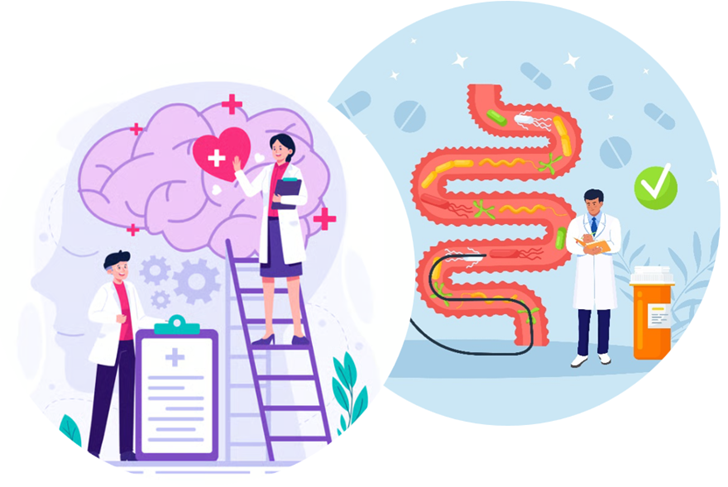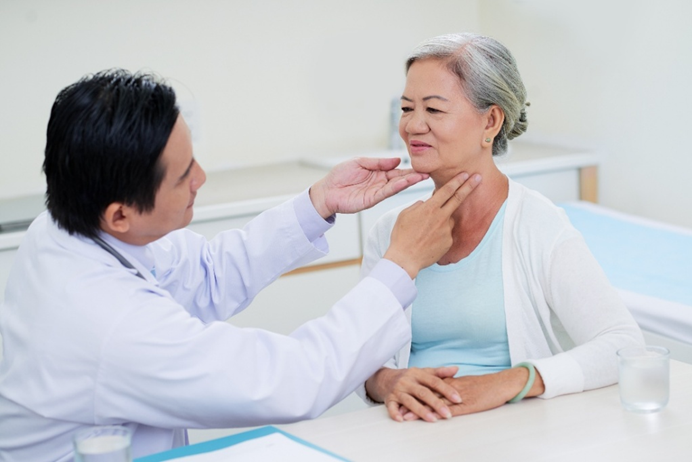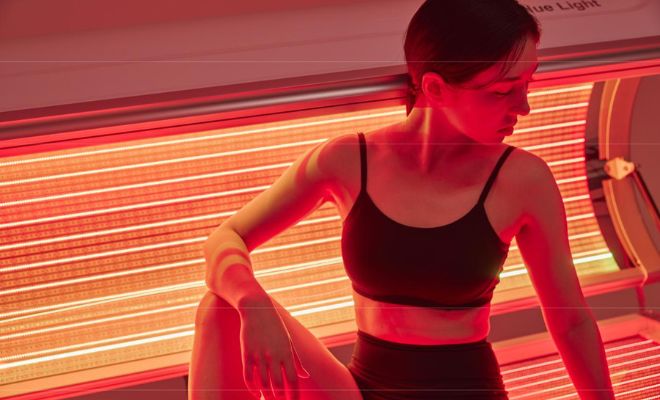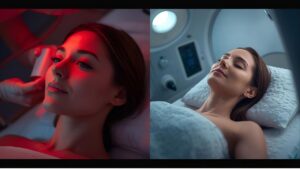If you’re managing a complex condition like diabetes, chronic inflammation, or nerve damage, focusing only on localized pain relief may not be enough. Your body works as a whole, and so should your treatment. Whole-body photobiomodulation (PBM) therapy is emerging as a powerful, science-backed solution that restores balance not just to one part, but to your entire system.
It does not treat just a single organ or localized area; it influences the homeostasis of the entire body, including the nervous system, immune system, circulatory system, hormonal system, lymphatic system, and the gut microbiome. These systemic effects are manifested through the following physiological pathways:
Physiological Mechanisms by Major System
1. Blood Circulation System Stimulation

Whole-body PBM allows red blood cells and vascular endothelial cells to absorb the energy from specific light sources, which induces the production of nitric oxide (NO) and vasodilation (widening of blood vessels).
As a result, this improves microcirculation, enhances the supply of oxygen and nutrients to peripheral tissues, nerves, and organs, and ultimately increases whole-body recovery capacity.
Related research article:
Hamblin MR. Mechanisms and applications of the anti-inflammatory effects of photobiomodulation. Photonics Lasers Med. 2017;6(3):235-245. doi: 10.3934/biophy.2017.3.337
2. Regulation of the Nervous System and Stimulation of the Brain-Gut Axis

Whole-body PBM not only affects the spinal cord and peripheral nerves but also influences the balance of the autonomic nervous system (sympathetic/parasympathetic nerves).
In particular, it indirectly stimulates the vagus nerve and the pons, exerting an indirect effect on stress response regulation, intestinal motility, gastric acid secretion, and microbial balance.
Related research article:
Salehpour F, Majdi A, Pazhuhi M, Ghasemi F, Khademi M, Pashazadeh F, Hamblin MR, Cassano P. Transcranial photobiomodulation improves cognitive performance in young healthy adults: a systematic review and meta-analysis. Photobiomodul Photomed Laser Surg. 2019;37(10):635–643. doi: 10.1089/photob.2019.4673
Integrative Regulation of the Hormonal and Immune Systems
PBM (Photobiomodulation) influences the pineal gland and hypothalamus, inducing changes in the secretion cycles of melatonin, cortisol, and growth hormone.
At the same time, it increases mitochondrial activity in immune cells, which helps suppress inflammatory cytokines (IL-6, TNF-α) and promotes the increase of anti-inflammatory cytokines (IL-10).
3. Lymphatic Circulation and Detoxification

Whole-body PBM promotes the contractility of lymphatic vessels and the activity of immune cells within lymph nodes, thereby contributing to the removal of inflammatory substances and metabolic waste from the body. Its effectiveness has been reported in conditions such as lower limb edema, inflammatory diseases, and lymphedema.
Related research article:
Salehpour F, Khademi M, Bragin DE, DiDuro JO. Photobiomodulation therapy and the glymphatic system: promising applications for augmenting the brain lymphatic drainage system. Int J Mol Sci. 2022;23(6):2975. doi: 10.3390/ijms23062975
4. Effects on the Gut Microbiome
The systemic action of PBM also exerts an indirect influence on intestinal mucosal immune activity and the gut bacterial ecosystem. In particular, nervous system regulation and autonomic nervous system recovery effects related to the brain-gut axis may simultaneously improve both mental health and gut function.
Related research article:
Jahani-Sherafat S, Taghavi H, Asri N, Rezaei Tavirani M, Razzaghi Z, Rostami-Nejad M. The effectiveness of photobiomodulation therapy in modulation gut microbiome dysbiosis-related diseases. Gastroenterol Hepatol Bed Bench. 2023;16(4):386-393. doi: 10.22037/ghfbb.v16i4.2687
Comparison of Local vs. Whole-Body PBM Therapy
| Category | Local PBM Therapy | Whole-Body PBM Therapy |
| Scope of Application | Limited to a specific area | Whole-body circulation and tissues |
| Duration of Effects | Temporary and localized | Long-term and systemic |
| Systemic Regulation | None or limited | Integrated action on nervous, endocrine, immune, and lymphatic systems |
| Inflammatory Control | Localized inflammation relief | Systemic regulation of inflammatory responses |
| Gut Microbiome Impact | None | Indirect modulation is possible via the brain-gut axis |
Conclusion
Whole-body PBM therapy is not simply about the “area of irradiation”; it is a treatment aimed at “restoring systemic homeostasis.”
While local PBM therapy is effective in temporarily relieving pain or inflammation in a specific area, whole-body PBM therapy helps restore the balance of the entire body, including the nervous, immune, endocrine, and circulatory systems.
For systemic metabolic diseases such as diabetes, this integrated approach is essential, and whole-body PBM therapy represents a next-generation regenerative medicine tool that goes beyond conventional treatments.













